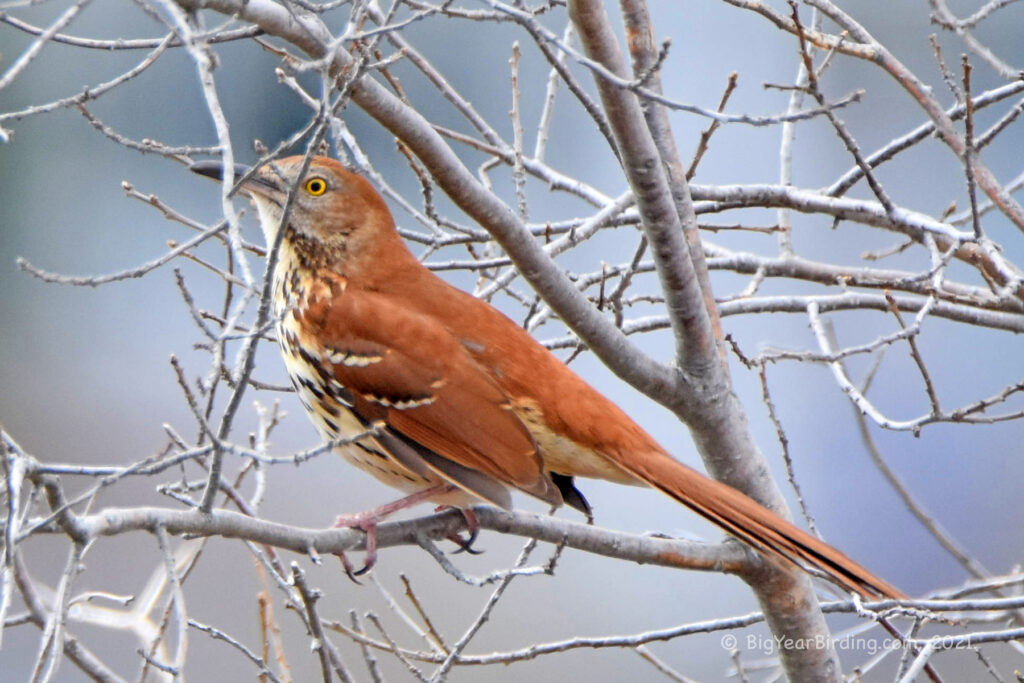
The Brown Thrasher is a medium-sized songbird that belongs to the Mimidae family. They are native to North America and are known for their beautiful and melodious song. Brown Thrashers are about 11-12 inches long and weigh between 2.3-3.1 ounces. They have a long tail and a slightly curved bill, which they use to forage on the ground for insects and small fruits.

The Brown Thrasher has several distinguishing field marks that make it easy to identify. They have a rich, reddish-brown plumage on their back and wings, and a creamy-white underbelly with dark streaks. They also have bold, bright-yellow eyes, a rufous tail, and a strikingly patterned head with a dark brown crown, whitish stripe above the eye, and a distinctive streaked brown cheek. They are often confused with the Northern Mockingbird, but their larger size and different markings make them easy to tell apart.
Brown Thrashers are migratory birds that breed in North America and migrate to southern regions of the United States, Mexico, and Central America during the winter months. They typically migrate at night and are solitary birds during their migration. During breeding season, Brown Thrashers are monogamous and build their nests in dense shrubs or low trees. They lay 3-5 eggs, which are incubated for about two weeks before hatching. Both parents participate in feeding and caring for the young.
In addition to their beautiful song, Brown Thrashers are also known for their aggressive behavior. They are fiercely territorial and will defend their nests against any perceived threats, including humans. Their loud, repetitive calls are often heard during breeding season and are used to warn off intruders. Despite their aggressive behavior, Brown Thrashers are beloved by birdwatchers and are a welcome addition to any backyard bird feeder.

Overall, the Brown Thrasher is a fascinating and beautiful bird that is easy to identify thanks to its distinctive markings and melodic song. Their migration patterns and breeding habits make them an interesting subject for bird enthusiasts, and their presence in North America is a valuable reminder of the incredible diversity of wildlife that exists in our world.

